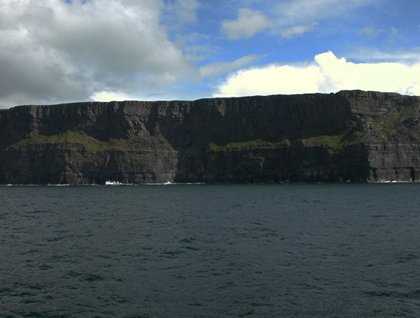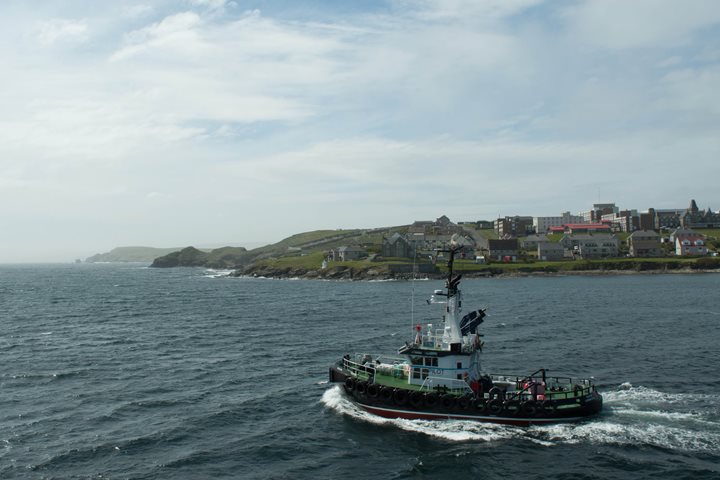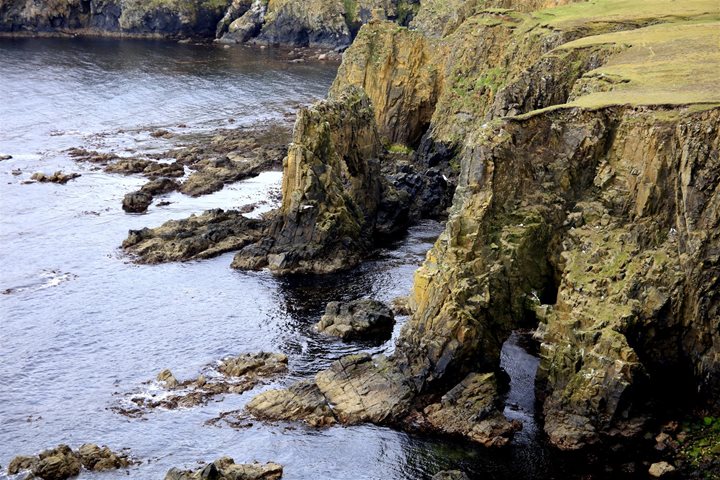Today we spent our second day in Ireland with a visit to the Cliffs of Moher and the Aran Islands. In the early morning we sailed by the 200m (600’) high cliffs of Moher in Co. Claire, on the east coast of Galway Bay. These sheer cliffs, made mostly of Carboniferous sandstones and shales, are nesting sites for a variety of seabirds and we saw puffins, razorbills, guillemots, gannets, and other birds leaving the cliffs on their morning feeding excursions. On top of the cliffs are two towers, one, called Moher tower was constricted in around 1805 so that the locals could keep a watch for Napoleon’s forces. The second, O’Brien’s Tower, was constructed in 1835 as a tourist attraction by Cornelius O’Brien, a descendant of Brian Boru, the first king to unite Ireland. He was prescient since today over a million visitors come to see the cliffs every year.
After breakfast we anchored off the town of Kilronan on the largest of the Aran Islands, Inishmore (Large Island). We went ashore in our Zodiacs and boarded a collection of minibuses to drive around, Aran is part of the Gaeltacht, or the region in western Ireland where Irish Gaelic is still spoken. We enjoyed listening to the natives conversing in Irish and the islands are one of the places in Ireland where high school students come in the summer months to learn Irish by living with families who still speak it. It is a requirement for obtaining a “leaving certificate,” which certifies that you have finished high school. The particular attraction on Inishmore is a promontory fort called Dun Aengus. A lovely walk up to the fort across the endless fields of Carboniferous limestone that make up all of the Aran Islands, brings you to the fort. It is semi-circular with high walls and cheval de frise on one side and a 100m (300’) cliff on the other dropping straight into the boiling sea.
After lunch we moved the ship to the smallest of the three islands, Inisheer. Here we were transported around the island by the local tractors pulling small trailers. We visited a 15th century fort and a graveyard built around a 13th century church. It was, all in all, a wonderful introduction to one of the most remote parts of Ireland.







